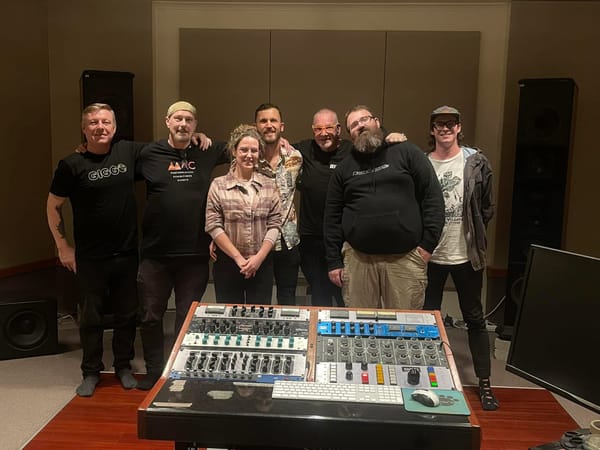Team PMFC Pro Blog | It's All About the (Stereo) Bass | By Barry Grint

Exclusive Blog for PMFC Global by legendary Mastering Engineer Barry Grint (Madonna, R.E.M, David Bowie, Oasis)
Mid and Side, Sum and Difference, Lateral and Vertical are all ways to describe stereo. In the world of disc mastering, it is the latter that we use when addressing how a lathe reacts to the signal being cut.
A Mono signal results in a sideways (lateral) movement of the cutting stylus.
Therefore, the groove cut with a Mono sine wave tone, when inspected under a microscope, demonstrates a groove similar to the display of an oscilloscope.
Repeating this process using an out-of-phase tone still results in a representation of the sine wave being cut, but this time the cutting stylus is moving up and down (vertical).
It is important to understand that the cutting stylus is triangular in shape, meaning that a deeper groove is also wider and a shallow groove narrower. So, the result of the cut made here is sausage-shaped grooves as the stylus follows the sine wave pattern.
Why does this matter when mixing?
I wish that I had a pound for every time I have been told, “when I was studying, my tutor said that for vinyl, the bass has to be Mono.” The underlying reasoning for this is that bass frequencies have a long wavelength, and stereo bass will give long sweeping vertical movements of the cutting stylus.
This can cause the stylus to dig down through the lacquer coating to the aluminium disc underneath, damaging the stylus, or to raise up, making a very shallow groove, and sometimes to leave the surface of the lacquer altogether, resulting in a record that will skip.
The truth of the matter is that you should prepare your mix as you see fit (I am only addressing stereo bass, not other considerations).
Every disc mastering studio has an item of equipment called an Elliptical Equaliser (EE). The engineer can choose a threshold frequency from which point the bass is progressively made mono, making the bass element of the groove change from a vertical to a lateral movement.
Through test cutting and viewing how the lathe reacts, the engineer can make the minimum alteration to ensure that the problem is resolved.
If you have any cutting-related questions but have been afraid to ask, this is your opportunity!
ALCHEMY MASTERING AT AIR
Thanks for reading!
Many more professional producer, audio engineer, and musician blogs to come!
Join our mailing list to get updated direct to your inbox.
Also we would love you to join our Facebook community. Hit the Facebook logo on the left of this blog to get full access and ask questions to the best producers and audio engineers in the world!
It's all free in the name of networking and education!
Professional audio engineers/producers/pro musicians. We'd love you to share your journey with us and write blogs for PMFC Global.
All authors retain 100% rights of your work and we link to all of your socials and website.
Email blog ideas/drafts to pmfcglobalblogs@gmail.com
Team PMFC x




